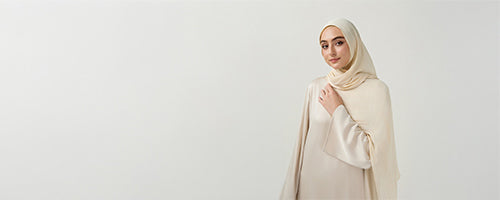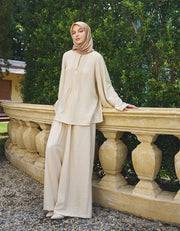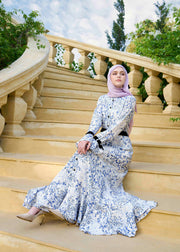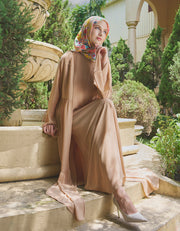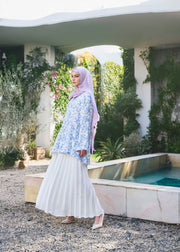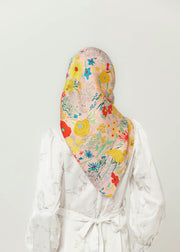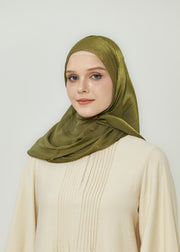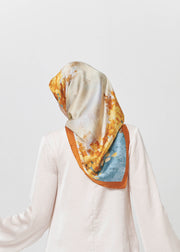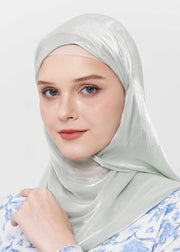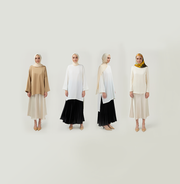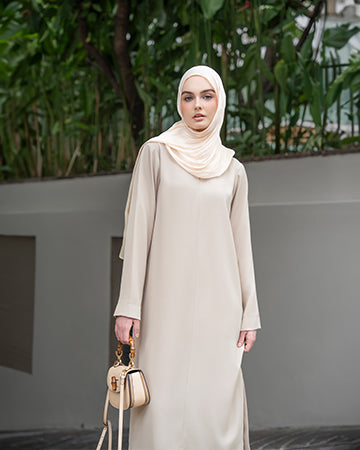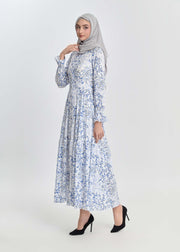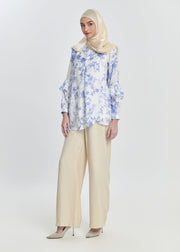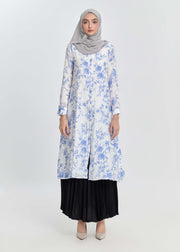Exploring the Role of the Hijab in Muslim Culture and Modern Fashion
The hijab in Muslim culture represents much more than just a religious garment. It is a deeply rooted symbol of modesty, spiritual connection, cultural heritage, and personal empowerment. Over time, the hijab in Muslim fashion has evolved significantly, gaining recognition both within and outside the Muslim world. From daily wear to haute couture, hijabs now reflect a broad spectrum of expression that harmonizes faith with fashion.
The Cultural and Spiritual Significance of the Hijab in Muslim Communities
In Islam, modesty is a core value, and the hijab is one of its most visible expressions. The hijab in Muslim culture signifies a woman’s devotion to her faith and her desire to present herself in a way that honors Islamic teachings. However, it’s not solely a religious obligation—it is also a cultural tradition passed down through generations.
In many communities, wearing the hijab is a personal choice made by women who seek to represent their beliefs, their families, and their societies. It’s a conscious decision to embrace an identity that often goes against prevailing beauty standards and external pressures, especially in non-Muslim societies.
The Evolution of the Hijab in Muslim Fashion Across Decades
The hijab in Muslim fashion has transformed over the years—from simple, monochromatic headscarves to vibrant, luxurious fabrics tailored to modern silhouettes. In the early 20th century, hijab styles were more region-specific and conservative. But with globalization and increased representation of Muslim women in media and fashion, today’s hijab has become both a fashion statement and a cultural bridge.
Muslim fashion influencers and designers now lead trends in modest fashion, introducing bold color combinations, sustainable fabrics, and creative layering. The hijab is often paired with modern modest wear like flowy dresses, wide-leg pants, and oversized blazers.
The Hijab in Muslim Fashion and Its Influence on Global Style
The increasing visibility of the hijab in Muslim fashion has had a significant impact on the global fashion industry. Modest fashion is now a thriving market, with international brands like Nike, H&M, and Dolce & Gabbana launching hijab-inclusive lines.
Fashion shows featuring hijabi models have challenged mainstream norms and brought new standards of beauty to the forefront. Designers from Muslim-majority countries such as Indonesia, Turkey, and the UAE are gaining global attention for their ability to blend faith, tradition, and high fashion.
Hijab on Fashion Show
The Role of the Hijab in Muslim Identity and Empowerment
Beyond style, the hijab in Muslim identity plays a powerful psychological and emotional role. For many women, it is a source of confidence and empowerment. Choosing to wear the hijab is often a reclaiming of agency—an act of resistance against both Western stereotypes and internalized cultural expectations.
In professional and academic spaces, the hijab is also a visible representation of diversity and inclusion. Muslim women who wear the hijab often become ambassadors of their faith, dispelling misconceptions and breaking barriers.
The Role of the Hijab in Muslim Identity and Empowerment
Styling the Hijab in Muslim Fashion: A Modern Approach
Contemporary Muslim women have found innovative ways to style the hijab in Muslim fashion. From turban styles to under-scarves and magnetic pins, the options are endless. Social media platforms like Instagram and TikTok have become hubs for hijab styling tutorials, modest fashion hauls, and brand collaborations.
Some women favor minimalist styles, pairing solid-colored hijabs with neutral outfits, while others experiment with bold prints and layered textures. Hijab fashion today embraces both functionality and beauty.
Addressing Misconceptions Around the Hijab in Muslim Culture
Despite its rising popularity and acceptance, the hijab in Muslim culture continues to be misunderstood in many parts of the world. Media narratives often portray the hijab as a symbol of oppression, ignoring the voices of the millions of women who proudly and freely choose to wear it.
To counter these narratives, education and representation are key. Hearing stories from hijab-wearing women themselves helps the world understand that the hijab is a deeply personal and empowering choice—rooted in belief, not coercion.
The beauty of Hijab in Muslim Culture
The Hijab in Muslim Fashion as a Living Expression of Faith and Freedom
The journey of the hijab in Muslim culture and fashion is one of resilience, creativity, and evolving identity. Whether worn as a sign of religious devotion, cultural pride, or personal style, the hijab continues to inspire conversations around modesty, freedom, and representation.
As more women around the world reclaim their narrative, the hijab stands as both a spiritual emblem and a modern fashion icon—bridging the gap between tradition and contemporary expression.

